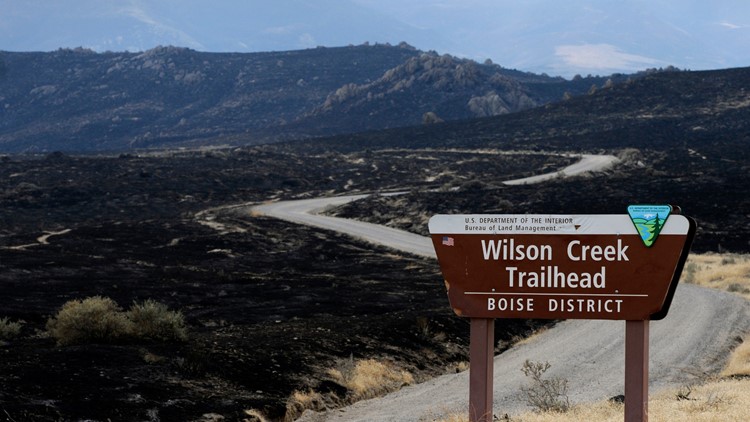BOISE, Idaho — One option in a plan to battle devastating wildfires in southwestern Idaho, southeastern Oregon and northern Nevada creates 1,500 miles (2,400 kilometers) of fuel breaks up to 400 feet (120 meters) wide along existing roads.
The U.S. Bureau of Land Management on Friday released a draft environmental impact statement for the Tri-State Fuel Breaks Project and is taking public comments through November.
The agency said creating fuel breaks by clearing vegetation will help firefighters stop wildfires and protect key habitat for sage grouse and other wildlife on land also used by cattle ranchers and outdoor enthusiasts.
The area contains one of the largest strongholds for greater sage grouse in the northern Great Basin but faces wildfire threats from invasive annual grasses, notably fire-prone cheatgrass. Federal officials in 2015 declined to list sage grouse as needing protection under the Endangered Species Act.
But giant wildfires have impacted the bird's habitat. In the last decade, the area has seen repeated giant rangeland wildfires up to 870 square miles (2,250 square kilometers). The agency said that at least five of the wildfires, mainly fueled by cheatgrass, burned more than 150 square miles (390 square kilometers) in the first 24 hours.
Cheatgrass is an annual that quickly returns, while native, slow-growing sagebrush can take decades to recover.
"The shrub-steppe landscapes within this area represent one of the most imperiled ecosystems in the United States," the bureau said.
Scott Lake of Western Watersheds Project, an environmental group, said the fuel breaks would ultimately harm the region by opening areas to cheatgrass and other invasive plants. He also said the fuel breaks would fragment habitat, isolating wildlife populations afraid to cross open ground created by fuel breaks.
The bureau doesn't "manage these fuel breaks to the extent that's needed to prevent invasive species from taking root," Lake said.
Sage grouse are ground-dwelling, chicken-sized birds found in 11 Western states, where between 200,000 to 500,000 remain, down from a peak population of about 16 million. They rely on sagebrush to survive.
The Idaho Department of Fish and Game said earlier this year that sage grouse numbers in the state have dropped more than 50% since 2015. In Oregon, bird numbers this year reached their lowest number — 14,000 — since reliable estimates have been recorded beginning in 1996, according to the Oregon Department of Fish and Wildlife.
The Bureau of Land Management said there are four options in all for fuel breaks contained in the draft plan, including options with fewer miles of fuel breaks to none.
Lance Okeson, who is leading the project for the bureau, did not return a call from The Associated Press on Monday.



